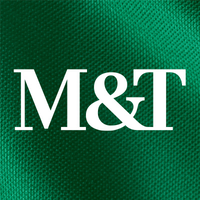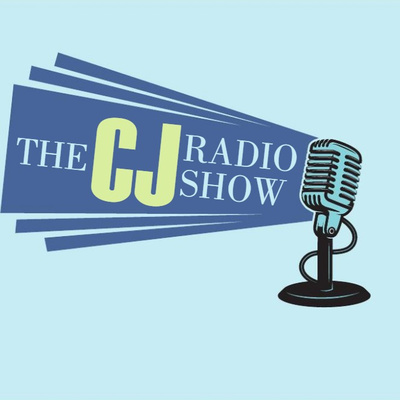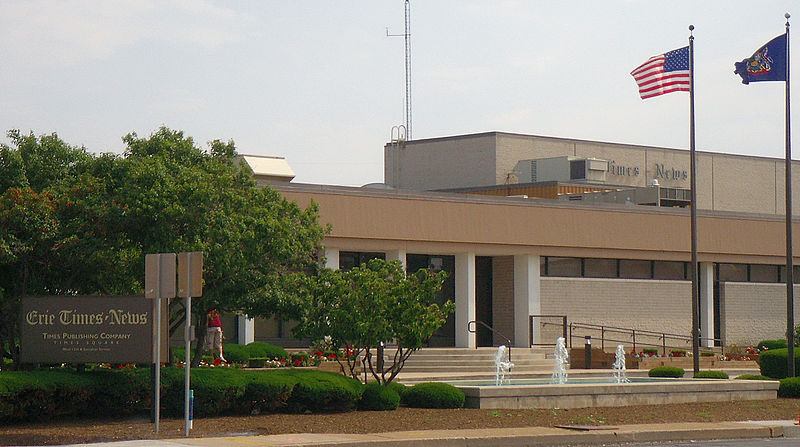
by logisticsplus | May 29, 2020 | News
 In case you missed it, six young women in leadership roles at Logistics Plus were recently recognized as “rising stars” in Business Magazine, a Manufacturer & Business Association (MBA) publication. As a follow up, these six ladies (noted below) were also featured in a recent airing of Business Spotlight on WPSE AM 1450/FM 107.1 Radio. Business Spotlight is a 30-minute program airing Fridays at noon. Each segment focuses on a business or organization that is making an impact across the region.
In case you missed it, six young women in leadership roles at Logistics Plus were recently recognized as “rising stars” in Business Magazine, a Manufacturer & Business Association (MBA) publication. As a follow up, these six ladies (noted below) were also featured in a recent airing of Business Spotlight on WPSE AM 1450/FM 107.1 Radio. Business Spotlight is a 30-minute program airing Fridays at noon. Each segment focuses on a business or organization that is making an impact across the region.
The women interviewed for this segment are:
In this segment, these women discuss their role at Logistics Plus, their background and experience, and what it means to be named a rising star. You can listen to a replay of the interview on the Logistics Plus YouTube Channel below.

by logisticsplus | May 26, 2020 | News
 In case you missed the last update or wondered what happened to the Vite et Reves sailboat that Logistics Plus was tracking, we have new updates to provide. The Vite et Reves, captained by Pieterjan De Smedt, a close friend of Logistics Plus Global Project Manager Frederik Geirnaert, was on a multiple-month voyage from Greece to Australia. Logistics Plus equipped the sailboat with one of its tracking devices to showcase our tracking and visibility capabilities.
In case you missed the last update or wondered what happened to the Vite et Reves sailboat that Logistics Plus was tracking, we have new updates to provide. The Vite et Reves, captained by Pieterjan De Smedt, a close friend of Logistics Plus Global Project Manager Frederik Geirnaert, was on a multiple-month voyage from Greece to Australia. Logistics Plus equipped the sailboat with one of its tracking devices to showcase our tracking and visibility capabilities.
Latest Update:
Due to COVID-19 and related travel restrictions, the tracking device shows them stuck in Grenada since March 8th. After our last update, the Vite et Reves crossed the Atlantic and arrived in the Caribbean. Since arriving in Grenada, the crew has been stuck on their boat and they are only allowed short trips to the beach. The crew has made it clear that they definitely won’t make it to Australia anymore, but they still hope to travel further south once they get permission.
For more details or to read the captains blog, visit here: https://vite-et-reves.com/
To follow the path of the sailboat (once it moves again), visit here: https://vite-et-reves.com/static/route/
Recent pictures from their current situation can be seen below.


by logisticsplus | May 22, 2020 | News
Logistics Plus Inc. (LP) has been an M&T Bank customer since it was founded 25 years ago. When the pandemic began to unfold, Logistics Plus founder and CEO Jim Berlin saw an opportunity to both continue operations, and help those on the front lines by adapting its business model to include PPE sourcing and distribution. M&T Bank group manager David Ladori helped LP navigate the process to secure the funding it needed. To highlight this partnership, M&T Bank recently posted the client spotlight video shown below.
“M&T has been there for us from day 1–when we first started this crazy adventure—and have stood by us consistently, through thick and thin,” said Berlin. “Not everyone knows, of course, but their support has helped allow us to be ourselves—our somewhat ‘unique’ LP Style (?). So…thanks to Dave and Kevin and Mark and the rest of the team at M&T, and a special shoutout to Wendy Wilcox, for ALWAYS being there for us. Thank you, guys.”

by logisticsplus | May 19, 2020 | News
 Authority Magazine, a Medium publication, is devoted to sharing interesting “interview series” featuring people who are authorities in Business, Film, Sports and Tech. It uses interviews to draw out stories that are both empowering and actionable.
Authority Magazine, a Medium publication, is devoted to sharing interesting “interview series” featuring people who are authorities in Business, Film, Sports and Tech. It uses interviews to draw out stories that are both empowering and actionable.
Here is a recent article by Charlie Katz from his interview with Jim Berlin, founder and CEO of Logistics Plus. The article is titled “How Jim Berlin of Logistics Plus Plans To Rebuild In The Post COVID Economy.”
Opening Excerpt:
“Being an essential business (delivering the goods to support the front-line heroes and to keep the community fed and healthy), we had to rally the gang to keep working, even through difficult and uncertain times. That was the biggest challenge. Keeping everyone motivated by reminding them that we had our job to do, and while perhaps “dangerous,” there were many others who faced way more danger who are doing theirs. So proud of how our team responded.”
Read the rest of the entire interview online here:
https://medium.com/authority-magazine/how-jim-berlin-of-logistics-plus-plans-to-rebuild-in-the-post-covid-economy-d7e003e29e79

How Jim Berlin of Logistics Plus Plans To Rebuild In The Post COVID Economy

by logisticsplus | May 18, 2020 | News
 Jim Berlin, founder and CEO of Logistics Plus, was recently a guest of Johnny Irish on The CJ Show, a part of Miami Business Radio @ 880theBiz. The segment, titled “Jim Berlin, Trucker or CEO? The Shipping Business AND maybe a bit of both!” can be heard below.
Jim Berlin, founder and CEO of Logistics Plus, was recently a guest of Johnny Irish on The CJ Show, a part of Miami Business Radio @ 880theBiz. The segment, titled “Jim Berlin, Trucker or CEO? The Shipping Business AND maybe a bit of both!” can be heard below.

by logisticsplus | May 18, 2020 | News
FOR IMMEDIATE RELEASE
Logistics Plus Purchases Times-News Building in Erie, Pennsylvania
The 50-year building located at 205 W. 12th Street will remain home to Erie Times-News and its staff.
 ERIE, PA (May 18, 2020) – Logistics Plus Inc., a leading worldwide provider of transportation, logistics, and supply chain solutions, has purchased the 88 thousand square foot Times-News Building in Erie, Pennsylvania. The building, located only a block away from the Logistics Plus global headquarters at Erie’s historic Union Station, will remain home to Erie Times-News/GoErie.com and its staff, as well as MCPc, its other tenant. Logistics Plus will use the warehousing and dock space in the rear of the building to support current and new customer-related logistics activities.
ERIE, PA (May 18, 2020) – Logistics Plus Inc., a leading worldwide provider of transportation, logistics, and supply chain solutions, has purchased the 88 thousand square foot Times-News Building in Erie, Pennsylvania. The building, located only a block away from the Logistics Plus global headquarters at Erie’s historic Union Station, will remain home to Erie Times-News/GoErie.com and its staff, as well as MCPc, its other tenant. Logistics Plus will use the warehousing and dock space in the rear of the building to support current and new customer-related logistics activities.
The Times-News industrial office building located at 205 West 12th Street was constructed in 1970 and Erie-Times News (ETN) will be celebrating the 50th anniversary of its occupancy on June 6th. The Times-News was founded in 1888, and in 2016 it was acquired by GateHouse Media, now known as Gannett – the largest U.S. newspaper publisher in the country.

Berlin comments on WPSE Money Radio
“This is a win-win for Erie,” said Jim Berlin, founder and CEO of Logistics Plus. “As the new building owner, we have a long-term agreement to keep Erie Times-News and MCPc home, here in Erie, where they belong. And the largely unused warehousing space in the back will now be used by Logistics Plus to support our current and future operations, keeping additional work in downtown Erie.”
“The sale of the building was something we were very uneasy about,” said Terry Cascioli, the Regional Vice-President NY/PA for Gannett. “We’re so excited that Logistics Plus is the new building owner, and all that anxiety has flipped to optimism. I know I speak for the entire employee group that having Logistics Plus as a partner could not have been a better outcome!”
“The closeness meant a lot,” added Berlin. “We need more high-end warehouse space.”
For additional information, please read yesterday’s ETN announcement on the https://www.goerie.com/news/20200517/erie-times-news-selling-building-newspaper-to-stay.
About Logistics Plus Inc.
Logistics Plus Inc. provides freight transportation, warehousing, fulfillment, global logistics, business intelligence technology, and supply chain management solutions through a worldwide network of talented and caring professionals. The company was founded over 23 years ago in Erie, PA by local entrepreneur, Jim Berlin. Today, Logistics Plus is a highly-regarded fast-growing and award-winning transportation and logistics company. With a strong passion for excellence, its 450 global employees put the “plus” in logistics by doing the big things properly, and the countless little things, that together ensure complete customer satisfaction and success.
The Logistics Plus® network includes offices located in Erie, PA; Akron, OH; Baltimore, MD; Birmingham, AL; Buffalo, NY; Chicago, IL; Cleveland, OH; Dallas, TX; Des Moines, IA; Detroit, MI; Fort Worth, TX; Haslet TX; Houston, TX; Laredo, TX; Lexington, NC; Los Angeles, CA; Melbourne, FL; Nashville, TN; New York, NY; Olean, NY; Ontario, CA; San Bernardino, CA; San Francisco, CA; Tampa Bay, FL; Australia; Bahrain; Belgium; Canada; China; Colombia; Czech Republic; Egypt; France; Germany; India; Indonesia; Kazakhstan; Kenya; Libya; Mexico; Netherlands; Poland; Saudi Arabia; Singapore; Taiwan; Turkey; UAE; Ukraine; Uganda; and United Kingdom; with additional agents around the world. For more information, visit www.logisticsplus.com or follow @LogisticsPlus on Twitter.
Media Contact:
Scott G. Frederick
Vice President, Marketing
Logistics Plus Inc.
(814) 240-6881
scott.frederick@logisticsplus.com
Click the image below to download the Logistics Plus logo:


 In case you missed it, six young women in leadership roles at Logistics Plus were recently recognized as “rising stars” in Business Magazine, a Manufacturer & Business Association (MBA) publication. As a follow up, these six ladies (noted below) were also featured in a recent airing of Business Spotlight on WPSE AM 1450/FM 107.1 Radio. Business Spotlight is a 30-minute program airing Fridays at noon. Each segment focuses on a business or organization that is making an impact across the region.
In case you missed it, six young women in leadership roles at Logistics Plus were recently recognized as “rising stars” in Business Magazine, a Manufacturer & Business Association (MBA) publication. As a follow up, these six ladies (noted below) were also featured in a recent airing of Business Spotlight on WPSE AM 1450/FM 107.1 Radio. Business Spotlight is a 30-minute program airing Fridays at noon. Each segment focuses on a business or organization that is making an impact across the region.

 In case you missed the
In case you missed the 




 Jim Berlin, founder and CEO of Logistics Plus, was recently a guest of Johnny Irish on
Jim Berlin, founder and CEO of Logistics Plus, was recently a guest of Johnny Irish on 
 ERIE, PA (May 18, 2020) – Logistics Plus Inc., a leading worldwide provider of transportation, logistics, and supply chain solutions, has purchased the 88 thousand square foot Times-News Building in Erie, Pennsylvania. The building, located only a block away from the Logistics Plus global headquarters at Erie’s historic Union Station, will remain home to
ERIE, PA (May 18, 2020) – Logistics Plus Inc., a leading worldwide provider of transportation, logistics, and supply chain solutions, has purchased the 88 thousand square foot Times-News Building in Erie, Pennsylvania. The building, located only a block away from the Logistics Plus global headquarters at Erie’s historic Union Station, will remain home to 